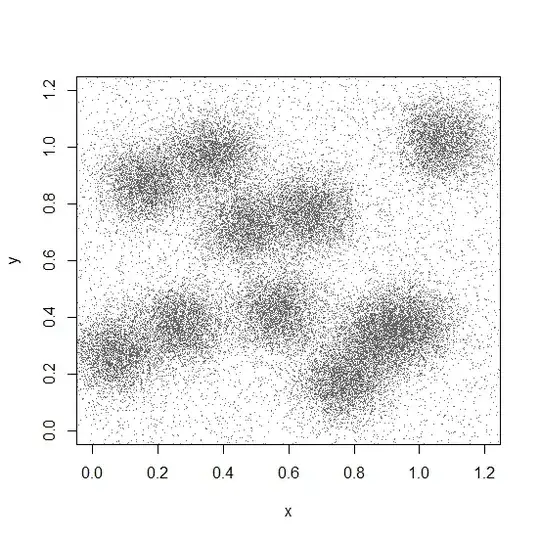An elaboration of the above answer on why it's not a good idea to calculate $R^2$ on test data, different than learning data.
To measure "predictive power" of model, how good it performs on data outside of learning dataset, one should use $R^2_{oos}$ instead of $R^2$. OOS stands from "out of sample".
In $R^2_{oos}$ in denominator we replace $ \Sigma (y - \bar{y}_{test})^2 $ by $ \Sigma (y - \bar{y}_{train})^2 $
If you want to know exactly what happens if one ignores $R^2_{oos}$ and uses $R^2$ on test dataset, read below.
I discovered, to my surprise, when the target variable has high variance compared to "signal" (dependency on feature), then calculating $R^2$ on test dataset (different from learning dataset) will produce negative $R^2$ with guarantee.
Below I put jupyter notebook code in Pyhton so anyone can reproduce it and see it themeselves:
import numpy as np
import pandas as pd
from matplotlib import pyplot as plt
import seaborn as sns
x = np.linspace(-1, 1, num=1_000_000)
X = x.reshape(-1, 1)
# notice 0.05 << 1 (variance of y)
y = np.random.normal(x * 0.05)
df = pd.DataFrame({'X': pd.Series(x), 'y': pd.Series(y)})
ax = sns.histplot(data=df, x='X', y='y', bins=(200, 100))
ax.figure.set_figwidth(18)
ax.figure.set_figheight(9)
ax.grid()
plt.show()

from sklearn import ensemble
from sklearn.model_selection import cross_val_score
fraction=0.0001
reg = ensemble.ExtraTreesRegressor(
n_estimators=20, min_samples_split=fraction * 2, min_samples_leaf=fraction
)
_ = reg.fit(X, y)
print(f'r2 score on learn dataset: {reg.score(X, y)}')
print('Notice above, r2 calculated on learn dataset is positive')
X_pred = np.linspace(-1, 1, num=100)
y_pred = reg.predict(X_pred.reshape(-1, 1))
plt.plot(X_pred, y_pred)
plt.gca().grid()
plt.gca().set_title('Model has correctly captured the trend')
plt.show()
r2 score on learn dataset: 0.0049158435364208275
Notice above, r2 calculated on learn dataset is positive

scores = cross_val_score(reg, X, y, scoring='r2')
print(f'r2 {scores.mean():.4f} ± {scores.std():.4f}')
r2 -0.0023 ± 0.0028
Despite model correctly capturing the trend, cross-validation consistently produces negative r2 on test dataset, different from learning dataset.
UPDATE 2022-01-19
The example I presented above has a technical error, the actual reason for negative $R^2$ is lack of shuffling of $X$, $y$ before cross-validating. Still, the point is correct, after shuffling one can still get negative $R^2$ reliably, and this is still fixed by using $R^2_{oos}$ instead. See Corrected example at github.

